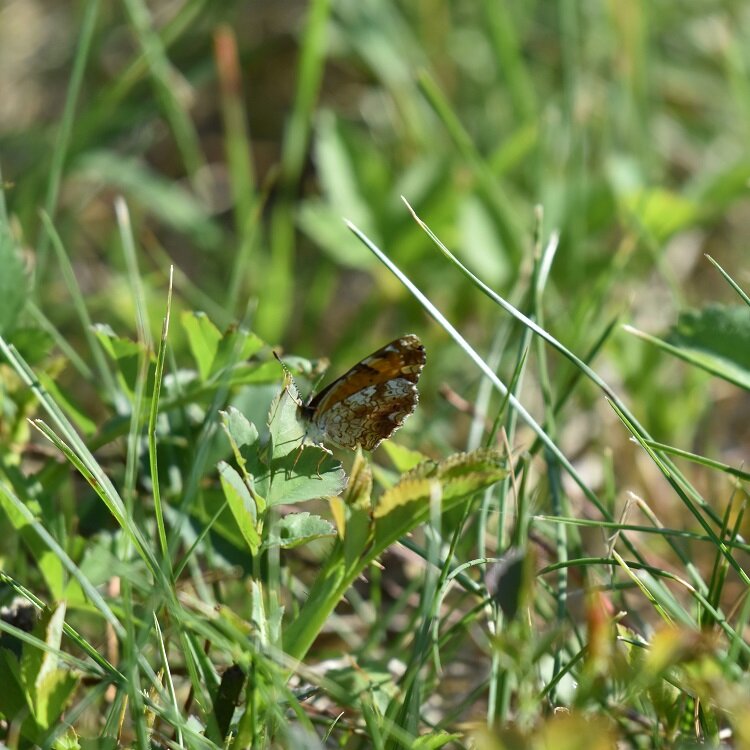
BIODIVERSITY
MANAGING FOR NATIVE BIRDS SUPPORTS NATIVE BIODIVERSITY
Grasslands are home to more than nesting birds! They are vital habitat for dozens of wildlife species. They are home, too, for our native wildflowers and pollinators.












Grasslands of all sizes are a critical habitat for many wildlife species, including pollinators, songbirds, raptors, deer, fox, turtles etc. throughout the year. Though lacking some of the nesting habitat value of large (greater than 10-acre) fields, even fields smaller than five acres still provide very important habitat. Some benefits provided by grasslands:
Pollinator and beneficial insect habitat
The plight of honeybees, monarch butterflies, birds, bats and other native pollinators have recently placed a renewed sense of urgency on the conservation of local pollinator and beneficial insect habitats. Grasslands with a mix of plant species provide crucial shelter and nutrients for beneficial insects such as lady beetles, beetles and spiders. These insects are a large source of food for animals such as birds. They help decompose plant matter and provide natural pest control. (From USFW Wisconsin: Recent studies have shown that perennial grasslands can have positive effects on beneficial insects and ecosystem services. Grassland habitats support an abundance and diversity of native bees.)
Nesting birds
According to the State of the Birds (www.stateofthebirds.org), grassland birds and their habitat are disappearing fast. Bird species that depend on grasslands have declined, along with their habitats, faster than any other group of birds in New England. Ground-nesting sparrow species nest in fields from May through July. For use as nesting habitat, it is important to have field centers remain undisturbed, as this is where the nesting activity will take place. (Field edges will be avoided due to increased predator pressure.)
Wildlife foraging area
For resident and migrating songbirds, fields provide food in the form of insects and seeds. Mice and other small mammals inhabiting the field will also provide a food source for raptors and mammalian predators such as foxes. Once other larger fields have been mowed, smaller standing fields are even more important as feeding areas for all of these species. The benefits of grasslands as a forage area extends both ways beyond the nesting calendar, as migrating warblers, sparrows, bobolinks and other birds species moving through in the spring and fall will use these areas to feed.
Cover and protection
The field will also provide cover for many animals, including juvenile birds working to build up flight muscles after fledging, and fawns that are left in grasslands by their mothers for protection in the spring before the fawns are mobile enough to travel. Though they are considered a woodlands species, American Woodcock (also in population decline) will use fields during different periods of their life cycle.
Wood turtles
The delayed mowing regime that supports grassland nesting birds also may benefit wood turtles in some locations. The wood turtle is considered an at-risk species that has been petitioned for Federal listing under the Endangered Species Act (ESA). Wood turtles will occupy grassland habitat adjacent to streams or rivers for basking and foraging.
“Wood Turtle … presence should be assumed wherever hay fields, pastures, or abandoned farmland are in close proximity to a high-density overwintering stream” (Northeast Wood Turtle Working Group).
POLLINATOR PARTNERSHIP
Want to support grassland birds and native pollinators? The New England Pollinator Partnership may be a good fit for you and your property. The Partnership is an agreement between the USDA Natural Resources Conservation Service (NRCS), the U.S. Fish and Wildlife Service (USFWS), and participating landowners to help restore populations several species of bees and monarch butterflies. Several of its recommended management practices also support grassland birds. Read the program flyer here, and contact us for more information.
BRING OLD FIELDS BACK TO LIFE
Want to refurbish a field for wildlife? Read this blog post from Program Manager Laura Suomi-Lecker to get started!


